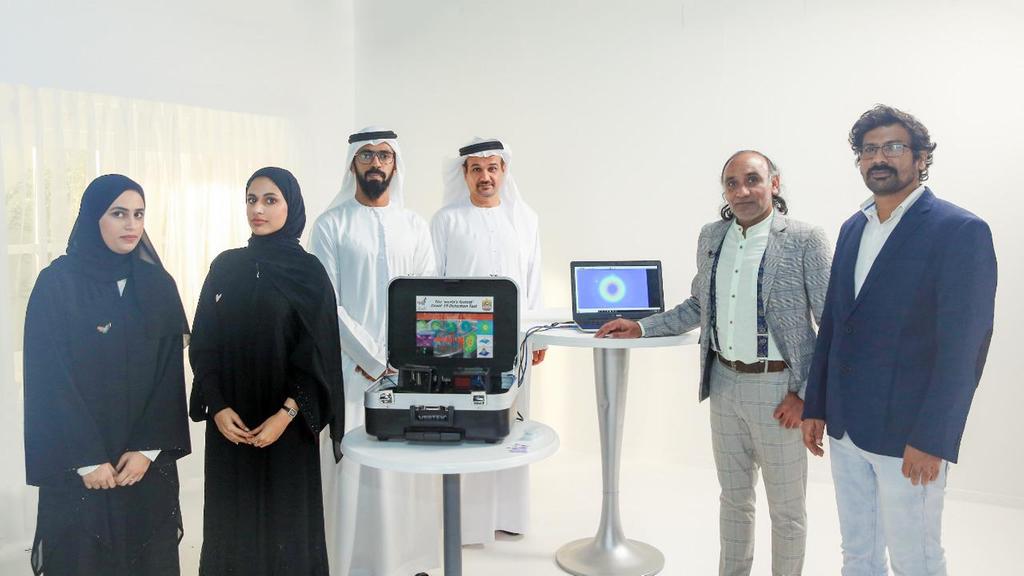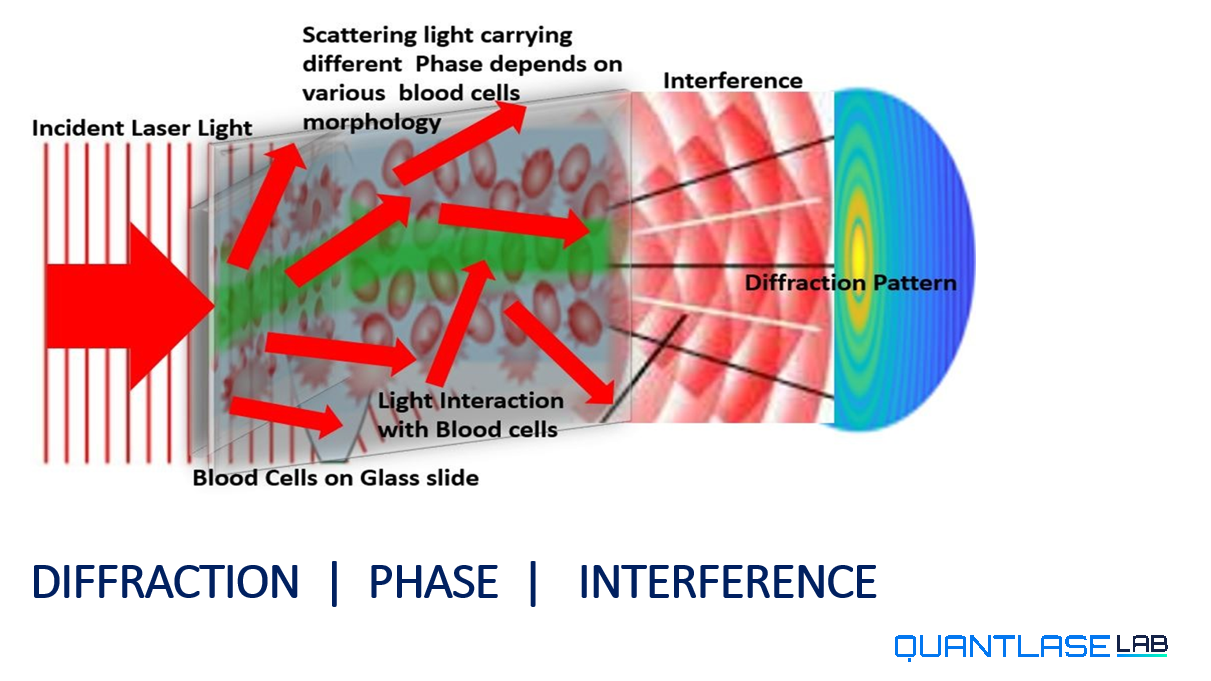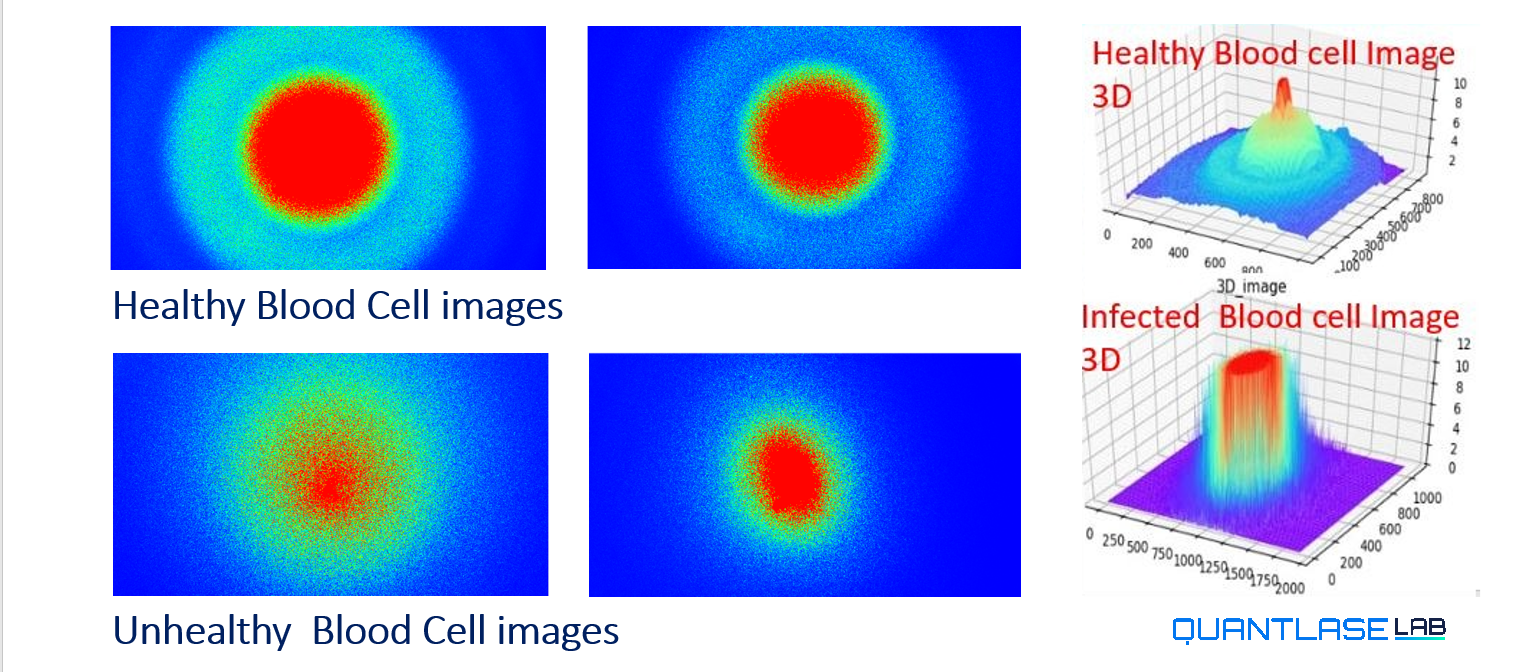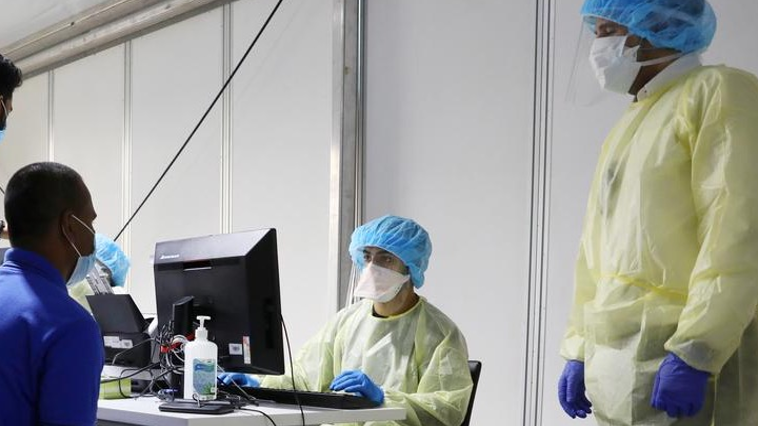- New COVID19 diagnostic tests which are more accurate and don’t require nasal or blood tests.
- The new technology uses the property of laser in detecting the difference in the cell shape of virus-infected cells.
- The tests show high accuracy of less than 10% requiring retesting.
- Currently, researchers are upgrading it to a higher accuracy level using artificial intelligence.
In a major development in COVID19 testing, a team of quantum physicists from a UAE-based research lab has developed a rapid laser test to detect COVID-19 patients, which can reduce the testing time to a few seconds with an accuracy rate of 85-90 percent and has the potential to replace the current nasal swab and blood tests that take several hours to process, reports CGTN
What is it?

QuantLase Imaging Lab, the medical research arm of the Abu Dhabi-based International Holdings Company, in a press statement said that the rapid test uses a novel equipment which enables for much faster mass screening,
with test results available in seconds and allowing testing on a wider scale including in public places.
The test uses laser to detect changes in the blood that could identify carriers before they become contagious
and will cost as low as 100 dirhams (193 yuan, 27 U.S. dollars), according to researchers involved with the project.
How does it work?

The test uses laser to detect changes in the blood that could identify carriers before they become contagious. /QuantLase Imaging Lab
“There is a significant change between an unhealthy blood cell and a healthy blood cell,” Pramod Kumar, head of research at QuantLase Imaging Lab and a research fellow at University of Exeter in the UK, said at a media briefing via Zoom on Thursday. “Based on this we can distinguish the infected person from a healthy one at a mass level and very quickly,” added the quantum physicist.
Blood cells of a healthy person appear round in shape under a laser beam, but unhealthy cells look deformed and scattered.
“If we shine a laser on a blood cell and if there is an infection, the blood cell gets deformed or is changed in shape, size, density, morphology. There are various kinds of changes in a blood cell. And because of this change, light gets scattered,” explained Kumar.

Blood cells of a healthy person appear round in shape under a laser beam, but unhealthy cells look deformed and scattered. /QuantLase Imaging Lab
“Light gets rebounded and makes a particular pattern on the screen, which will give the signature of the defect of the blood cell due to infection. This is the central idea behind it,” he said, adding that the test can detect any viral infection in the blood.
Explaining that all viruses have distinct shape, the experts said the laser device uses an algorithm to identify the particular coronavirus (SARS-CoV-2) that causes COVID-19.
High Accurate Techique
QuantLase said the new technology has been tested against 6,000 samples which were provided by the UAE government and the results show up to 85-90 percent accuracy.
“The test gives very few false positives, about four percent. We are more concerned that no positive patient gets negative results. We are trying to improve this accuracy and precision,” said Kumar. Up to 10 percent of samples require retesting as the algorithm cannot determine the result either way, he added.
Asked how does the new testing technology compare with the current PCR (polymerase chain reaction) COVID-19 tests that use nasal swabs to search for the DNA of the virus, Peter Abraham, executive director, International Holding Group said: “The laser test is a significant improvement. Because a nasal swab takes hours. This fundamentally is done in seconds.”
How AI Can Enhance Accuracy?
“The accuracy at the moment is very strong already but we’re working to improve the algorithm’s ability to spot a COVID-19 infected blood cell. This will take it even further because we have an ability to use AI (artificial intelligence) to do that work,” he added.
- Explaining the critical role of AI in the diagnostic system, Kumar said that an advanced AI image-analysis model predicts the outcome of each image with precision, speed and scale.
- This is especially critical in large-scale testing programs, where a massive number of images needs to be analysed with accuracy and efficiency.
The lab is using G42, a leading AI and Cloud Computing company, to further enhance the laser program.

The new technology has been tested against 6,000 samples which were provided by the UAE government and the results show up to 85-90 percent accuracy. /QuantLase Imaging Lab
Hub of innovation
The UAE government has backed the research and feels the technology will reinforce the Arab Gulf country’s position as a hub of research and innovation.
“We are always following innovations related to the early and rapid detection of COVID–19. The government is keen on supporting initiatives that help the healthcare system in the UAE,” AbdulRahman bin Mohammed Al Owais, UAE’s Minister of Health and Prevention, told the media.
“Health officials have been closely monitoring the progress of trials with QuantLase in order to test this equipment. We are proud to see a technology that works and that will help to protect our people better,” he added.
QuantLase hopes to roll out the product in the market in a few months. The company expects to receive the necessary approvals in the “coming weeks,” said Abraham.
Revealing that the technology has received “significant interest” from some very big international players, he said: “The ultimate aim is to mass manufacture the device in the UAE but this is something we need to do worldwide. We need to share this with the world.”
[Cover: Quantum physicists Pramod Kumar (2nd R), Mohammad Firoz Khan (R) and the executive team from QuantLase Imaging Lab pose with the rapid laser testing device in Abu Dhabi, UAE. /AETOSWire]
Did you subscribe to our daily newsletter?
It’s Free! Click here to Subscribe!
Source: CGTN

















